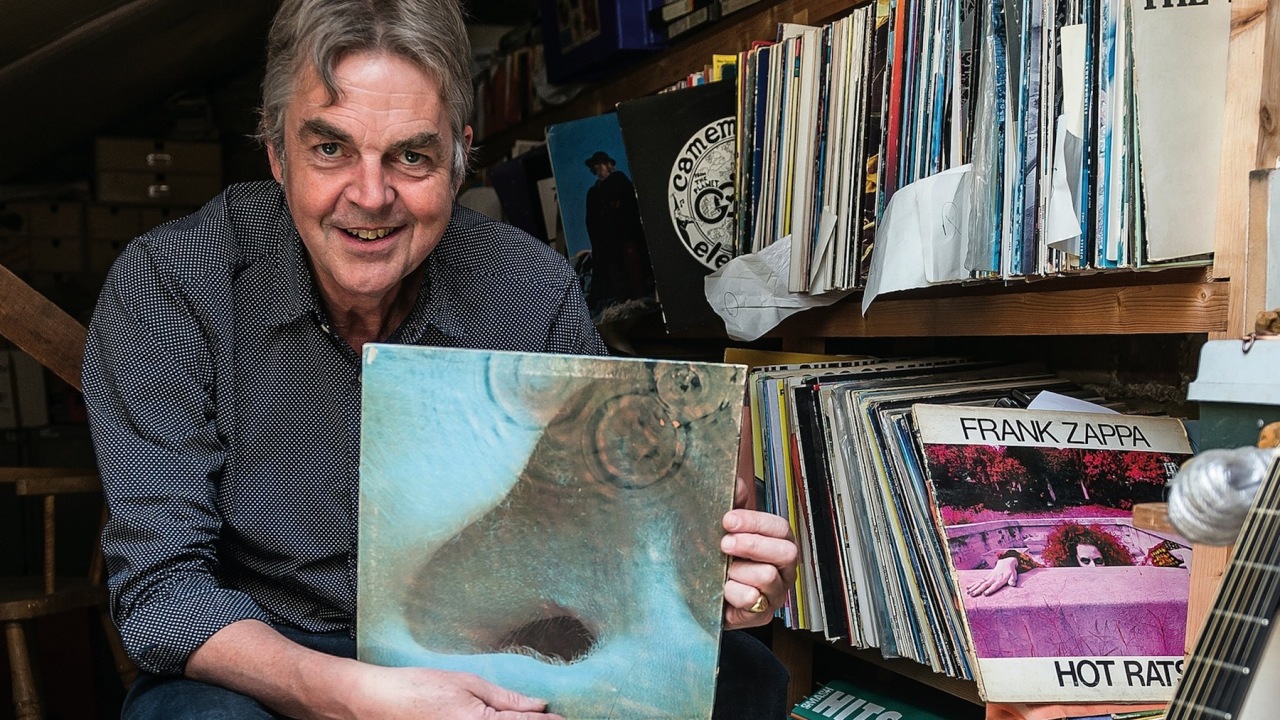"I was eight when The Beatles happened, then it was The Hollies, The Kinks, Pet Clark and Dusty Springfield.
I listened to absolutely everything. Growing up, I had three older sisters and I didn’t have that male attitude towards music, which was very helpful later in my career when I was editing Smash Hits and trying to decide which one was the hunk in Duran Duran! But when I was 14 or 15, I did have that male moment, before you start going out to pubs and you’re living in that sort of ‘bedroom world’ with your mates.
The first record we all got really interested in was_ Third_ by Soft Machine. I loved the mathematics of the music, the complicated time signatures, and it was an epic – a double album with just four tracks. Their first two albums were art-rock, but here they were influenced by Miles Davis. He does this modulation where he’ll play a riff, then just shift it up a tone, like on So What. The Softs will do this great meandering thing, then shift it up, and I thought it was so exciting. As for the sleeve, I really wanted to be there in that flat with them. Third encouraged great imaginings.
Trout Mask Replica was the most terrifying, dislocating thing I’d ever heard. I loved the folklore of the record, these guys standing on a psychedelic hillside, but people older than me had made the mental leap and could understand Captain Beefheart. I did try very hard to understand it – I knew how fashionable it was. It required an adjustment to go from the British concept of a hippie to these guys – they were ‘heads’, countercultural activists. Beefheart wasn’t really a musician – he heard these complicated things in his head and dragooned these young impressionable minions to perform them. That’s amazing. He’s not a bandleader like Frank Zappa.
I think part of the reason Hot Rats has stood the test of time is that apart from Willie The Pimp, it’s instrumental. Vocal music can date quicker. This isn’t improvisation in the way Cream did it. Here the horn players are reading charts, and Zappa never repeats himself. Every part is logical, expressive. It’s just as good as Coltrane or Cannonball Adderley. It’s really original.
For me, The Hangman’s Beautiful Daughter is a contender for the greatest record ever made. If prog is about extreme ambition, artistic range and sense of adventure then this is the one. The richness of people’s music is dependent on the extent of their own musical experience. The Incredible String Band grew up with folk, music hall, vaudeville, Gilbert And Sullivan, and before this record they went to Morocco and bought a load of instruments. They understood Eastern scales, used quarter notes and broke out of the pentatonic boxes of Western music. They used bowed gimbris and ouds, plus they were influenced by poets like Swinburne and Blake – their imagination was heightened. Again, I wanted to be in that cover, with them and their girlfriends Licorice and Rose on that commune.
Spencer Davis had been an R’n’B musician, then went off to a commune in Aston Tirrold to produce the music on Traffic’s John Barleycorn Must Die. I’m a folk fan and John Barleycorn’s a folk song that goes back to the 1720s. It’s part of this pagan opera about this weird relationship between the agricultural workers and the booze that’s made from the crop.
There are some records you think will give you the keys to the doors of perception. When I was at boarding school I’d sit up all night with my mates listening to Pink Floyd’s Meddle. You were allowed to talk through the first side, but turn over to side two for Echoes and – no talking! I studied the sleeve, this blue, psychedelic ear, and the strange drops. It did open my mind musically; the central section with sound effects is extraordinary. They were still underground then. All the later bombastic stuff was due to the dictates of the venues they were required to play. They couldn’t carry on playing this fragile, psychedelic whimsy because it wouldn’t travel half a mile across Knebworth Park!
Hot Tuna were a Jefferson Airplane splinter group. They played ragtime and blues, old Reverend Gary Davis tunes, and I discovered a lot of that music through them. I was really excited by First Pull Up, Then Pull Down – they take this music and convert it to electric format with Papa John Creach on electric violin and extemporising. It’s prog in the way they stretch these tunes way out of shape.
Whatevershebringswesing is the last great record Kevin Ayers made. Gong’s Didier Malherbe is on there, so’s Robert Wyatt, and Mike Oldfield plays guitar and bass on the title track, which is absolutely beautiful. David Bedford does these very pastoral, baroque, English arrangements, and there’s Kevin on the cover in a red pair of Y-fronts with this incredible-looking girl in a river. I just wanted to be him. It’s a very evocative and underrated record.
I’m really hung up on Duke Ellington at the moment – I can’t stop listening to his Black Brown And Beige box set. He grew up loving Delius, Ravel, Debussy, and his use of soloists is just brilliant. A good place to start is East St Louis Toodle-Oo. It’s based on the autumn leaves blowing down the street – you hear the chords as clouds of leaves, beautiful images of the city. And there’s always the Steely Dan version, of course!
More recently, The Hazards Of Love by The Decemberists is a great record. It’s a prog rock odyssey, a medieval fantasy that includes wounded fauns, a witch, a forest queen and a rake who murders his own children and is then haunted by their ghosts. [Founder] Colin Meloy’s great favourites are early Jethro Tull, especially Stand Up – another amazing record!”
Mark’s memoir Rock Stars Stole My Life! is published by Coronet, and is reviewed in this issue.
- Meet the best turntables for your record collection
- Smaller budget? No problem! These are the best budget turntables

